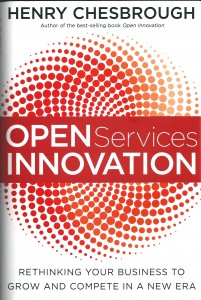The one-sentence summary
Viewing your business as a service rather than just a product holds the key to success, via open innovation.
WHAT THE BOOK SAYS 
· Open innovation is the key to rethinking your business to grow and compete in a new era, and viewing your business as a service rather than just a product adds a whole extra dimension to it.
· Four concepts and practices are crucial to get this done:
- Think of your business as a service business in order to sustain profitability and achieve new growth (regardless of your current view).
- Invite customers to co-create to generate better experiences, so they get more of what they really want.
- Being open accelerates service innovation, resulting in more choice for customers, and a platform for others to build on, and you to make money from (usually via licensing).
- Effective service innovation transforms business models to create profit from internal initiatives, stimulate external ones, and add overall value to the business.
· Many companies stagnate by concentrating solely on product, because of business realities that the author calls The Commodity Trap:
- Manufacturing and business process knowledge and insights are widely distributed.
- Product manufacturing is moving to areas of the world with very low costs.
- There is a shrinking amount of time a product lasts before a new and improved one takes its place.
· Continuing to run on this treadmill will not lead to growth.
WHAT’S GOOD ABOUT IT
· Open innovation assumes that firms can and should use external ideas as well as internal ones.
· This can mean that their competitors move from being ‘threatening leaders’ to ‘happy followers’.
· Economies of scope are quite different from economies of scale – they are efficiencies derived from offering multiple items from a single source, such as making many different kinds of products from the same facility and equipment.
· The origin of the term services in English is the Latin servitium meaning slavery or servant, but by the 1930s, US economists were explaining the move from manufacturing and agriculture to a third area: services brought about with the approval of a customer.
WHAT YOU HAVE TO WATCH
· The second part of the book is a set of case histories, so you can either skip these or head to the ones that are most helpful to the nature of your business.
